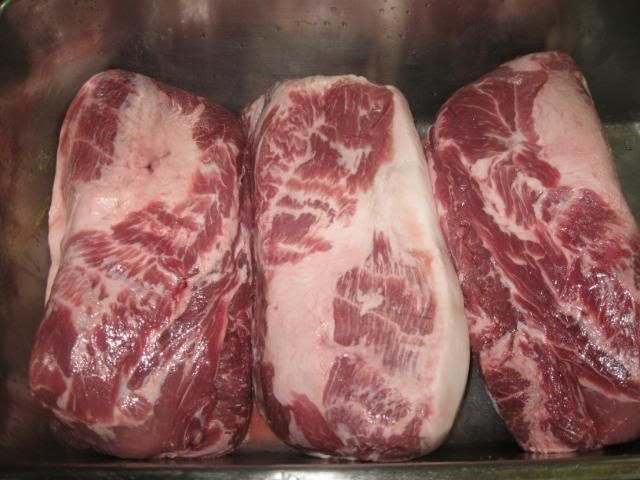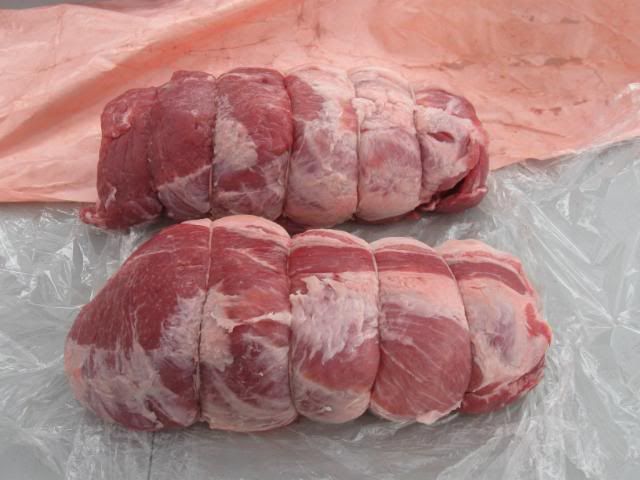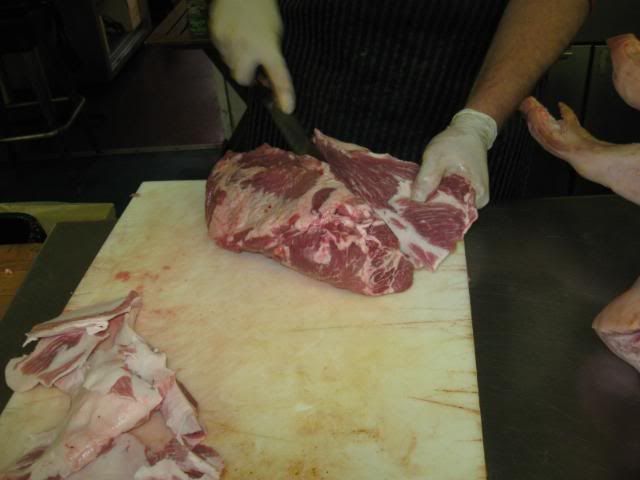Here is a complete list of numbers and brief description:
400 Carcass
400A Whole Roasting Pig
401 Leg (Fresh Ham)
401A Leg (Fresh Ham), Short Shank
401C Leg (Fresh Ham), Semi Boneless
402 Leg (Fresh Ham), Skinned
402A Leg (Fresh Ham), Skinned, Short Shank
402B Leg (Fresh Ham), Boneless
402C Leg (Fresh Ham), Boneless, Short Shank, Trimmed
402D Leg (Fresh Ham), Outside
402E Leg (Fresh Ham), Outside, Trimmed, Shank Remo
402F Leg (Fresh Ham), Inside 3-down
402G Leg (Fresh Ham), TBS, 3-Way, Boneless
403 Shoulder
403B Shoulder, Outside
403C Shoulder, Inside -
404 Shoulder, Skinned
405 Shoulder, Picnic
405A Shoulder, Picnic, Boneless
405B Shoulder, Picnic, Cushion, Boneless Amount as Specified
406 Shoulder, Boston Butt, Bone In -
406A Shoulder, Boston Butt, Boneless
406B Shoulder, Boston Butt, Boneless, Special
407 Shoulder Butt, Cellar Trimmed, Boneless
408 Belly
409 Belly, Skinless
409A Belly, Single Ribbed, Skinless
409B Belly, Center-Cut, Skinless
410 Loin, Bone In
411 Loin, Bone In, Bladeless
412 Loin, Bone In, Center-Cut 8 Ribs
412A Loin, Bone In, Center-Cut, 8 Ribs, Chine Bone Off
412B Loin, Boneless, Center-Cut, 8 Ribs
412C Loin, Bone In, Center-Cut, 11 Ribs
412D Loin, Bone In, Center-Cut, 11 Ribs, Chine Bone Off
412E Loin, Boneless, Center-Cut, 11 Ribs
413 Loin, Boneless
413A Loin, Boneless, Roast
413B Loin, Boneless, Special
414 Loin, Canadian Back
415 Tenderloin
415A Tenderloin, Side Muscle Off
416 Spareribs
416A Spareribs, St. Louis Style
416B Spareribs, Brisket Bones
416C Spareribs, Breast Off
416D Breast Bones under-1
417 Shoulder Hocks -
417A Leg (Fresh Ham) Hocks
418 Trimmings
420 Pig's Feet, Front
421 Neck Bones
423 Loin, Country-Style Ribs
422 Loin, Back Ribs
435B Pork for Kabobs
496 Ground Pork












